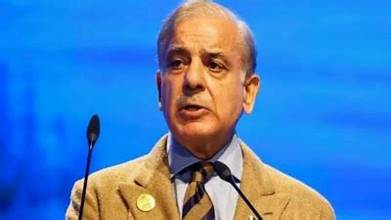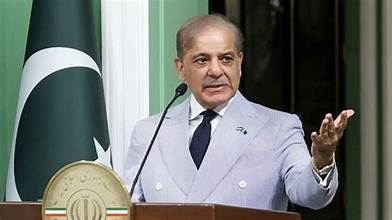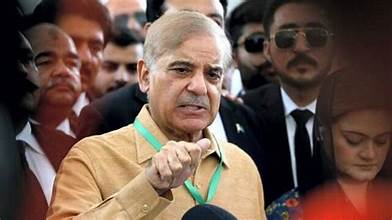In a significant diplomatic development that has drawn international attention, Prime Minister Shehbaz Sharif extended his heartfelt gratitude to former U.S. President Donald Trump for facilitating what he termed a “historic” trade agreement between Pakistan and the United States. The deal is being viewed as a major milestone in the evolving economic and strategic partnership between the two nations, potentially opening new avenues for bilateral cooperation and regional stability.
Strengthening Bilateral Ties
The trade agreement, details of which are gradually emerging, aims to boost exports, reduce tariffs, and foster joint ventures in sectors ranging from textiles to technology. It marks a renewed commitment from both sides to deepen economic engagement after a period of fluctuating diplomatic relations. PM Shehbaz Sharif, during a press briefing, praised Donald Trump’s role in helping finalize the deal, calling it a “game-changer” for Pakistan’s economy and a “symbol of mutual respect and shared interests.”
This outreach comes amid efforts by the Pakistani government to stabilize its economy, attract foreign investment, and reposition the country as a vital player in global trade. The new deal, according to experts, may provide a much-needed boost to Pakistan’s struggling export sector while allowing American companies better access to a growing South Asian market.
The Trump Factor

Although Donald Trump is no longer in office, his administration’s outreach to Pakistan during his term laid groundwork for improved economic dialogue. From suspending aid in the early days of his presidency to later praising Pakistan’s role in facilitating peace talks in Afghanistan, Trump’s relationship with Islamabad was complex but impactful. PM Shehbaz’s gesture of appreciation underscores Pakistan’s recognition of Trump’s behind-the-scenes influence in making this deal a reality—even post-presidency.
Political analysts interpret Shehbaz Sharif’s move as a calculated diplomatic strategy. By acknowledging Trump’s role, the current Pakistani administration not only strengthens ties with influential U.S. stakeholders but also signals its willingness to work across political lines in Washington for the benefit of Pakistan’s economy.
Key Features of the Trade Deal
Though the full text of the agreement has not been released, preliminary reports suggest several high-impact components:
- Tariff Reductions: Both countries have agreed to reduce tariffs on a range of goods, particularly in the textile and agricultural sectors.
- Investment Incentives: U.S. firms will receive special incentives to invest in Pakistan’s industrial zones and tech parks.
- Technology Transfer: The deal includes provisions for enhanced collaboration in information technology, cybersecurity, and clean energy.
- Job Creation: Both sides have emphasized that the deal will create jobs and stimulate innovation in their respective economies.
- Joint Ventures: There is encouragement for joint ventures in healthcare, pharmaceuticals, and infrastructure.
Economic Implications for Pakistan
Pakistan stands to gain significantly from this agreement. With the International Monetary Fund (IMF) demanding structural reforms and fiscal discipline, an expanded trade relationship with the U.S. could provide much-needed foreign exchange and job creation. The textile sector, which constitutes a large portion of Pakistan’s exports, is expected to benefit immensely due to tariff relaxations.
Furthermore, increased American investment in Pakistan’s tech ecosystem could catalyze innovation and digital transformation. Startups in Pakistan have shown immense potential in recent years, and U.S. interest may lead to more robust funding channels, mentorship, and global visibility.
A Win-Win for Both Nations

For the United States, this deal offers a strategic economic foothold in a region heavily influenced by China’s Belt and Road Initiative. By enhancing economic ties with Pakistan, the U.S. can maintain a degree of balance in South Asia, where both economic competition and political maneuvering are intensifying.
American companies will gain access to a market of over 240 million people with a young and increasingly tech-savvy population. Moreover, cooperation in energy and infrastructure can pave the way for long-term strategic projects that serve both commercial and geopolitical interests.
Political Ramifications
Domestically, the announcement of the trade agreement is a significant win for PM Shehbaz Sharif’s government, which has faced criticism over inflation, economic uncertainty, and governance issues. This deal projects an image of competent diplomacy and proactive international engagement.
At the same time, the opposition may view the warm words for Trump as controversial, especially given Pakistan’s traditionally closer alignment with the Democratic administrations in recent decades. However, many analysts believe this pragmatic approach reflects a matured foreign policy that prioritizes national interests over partisan affiliations.
Looking Ahead
The success of this trade agreement will ultimately depend on implementation. Past deals between Pakistan and the U.S. have often faltered due to bureaucratic delays, lack of transparency, or shifting political winds. This time, both nations appear more committed than before, perhaps due to the changing global economic order and regional dynamics.
PM Shehbaz’s public acknowledgment of Donald Trump’s role sets a new tone for future diplomatic engagements. It suggests that Pakistan is ready to broaden its foreign policy base and engage constructively with all global actors, irrespective of past frictions.
Conclusion
The historic trade deal between Pakistan and the United States marks a significant chapter in bilateral relations. PM Shehbaz Sharif’s expression of gratitude to former President Donald Trump highlights a rare moment of bipartisan continuity in U.S.-Pakistan ties. As the two nations prepare to operationalize this agreement, the global community will be watching closely to see how this newfound economic partnership evolves—and what it means for the region and the world.



